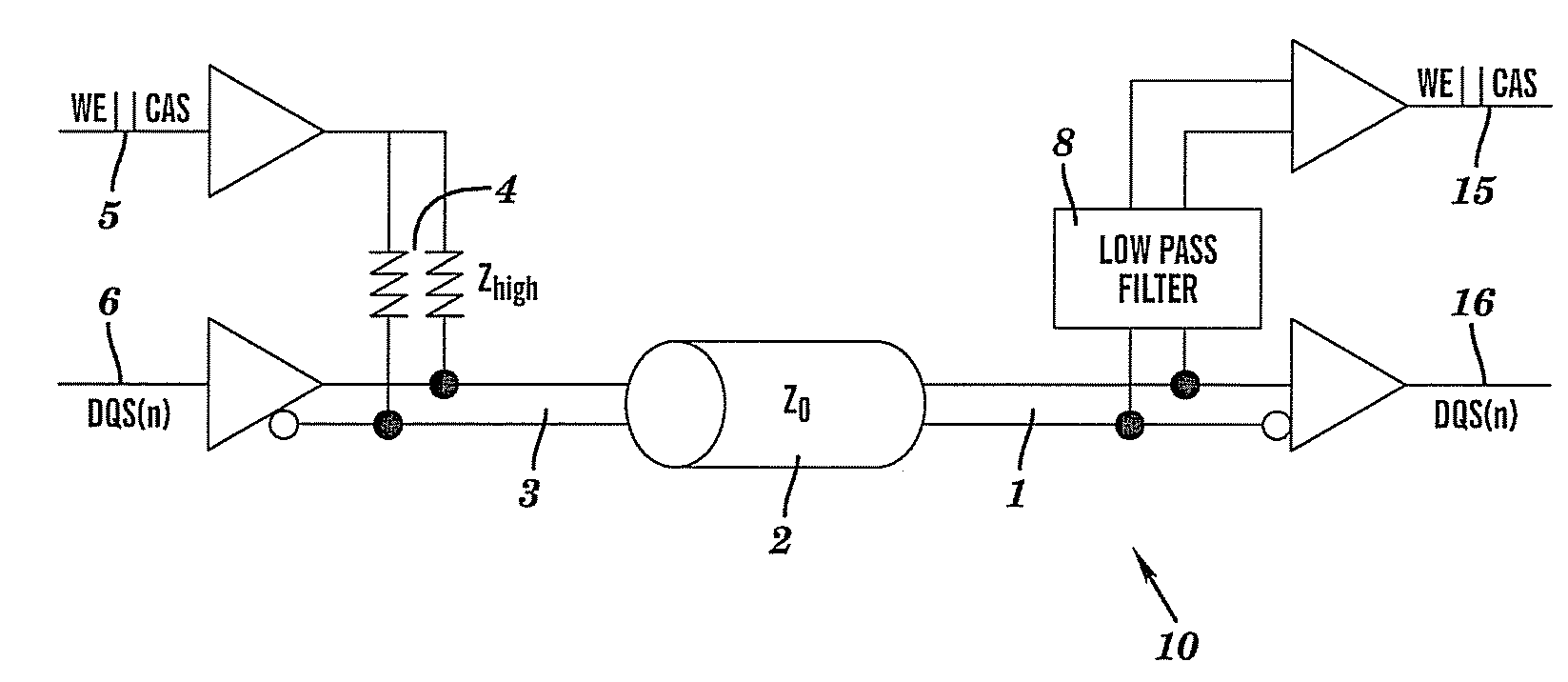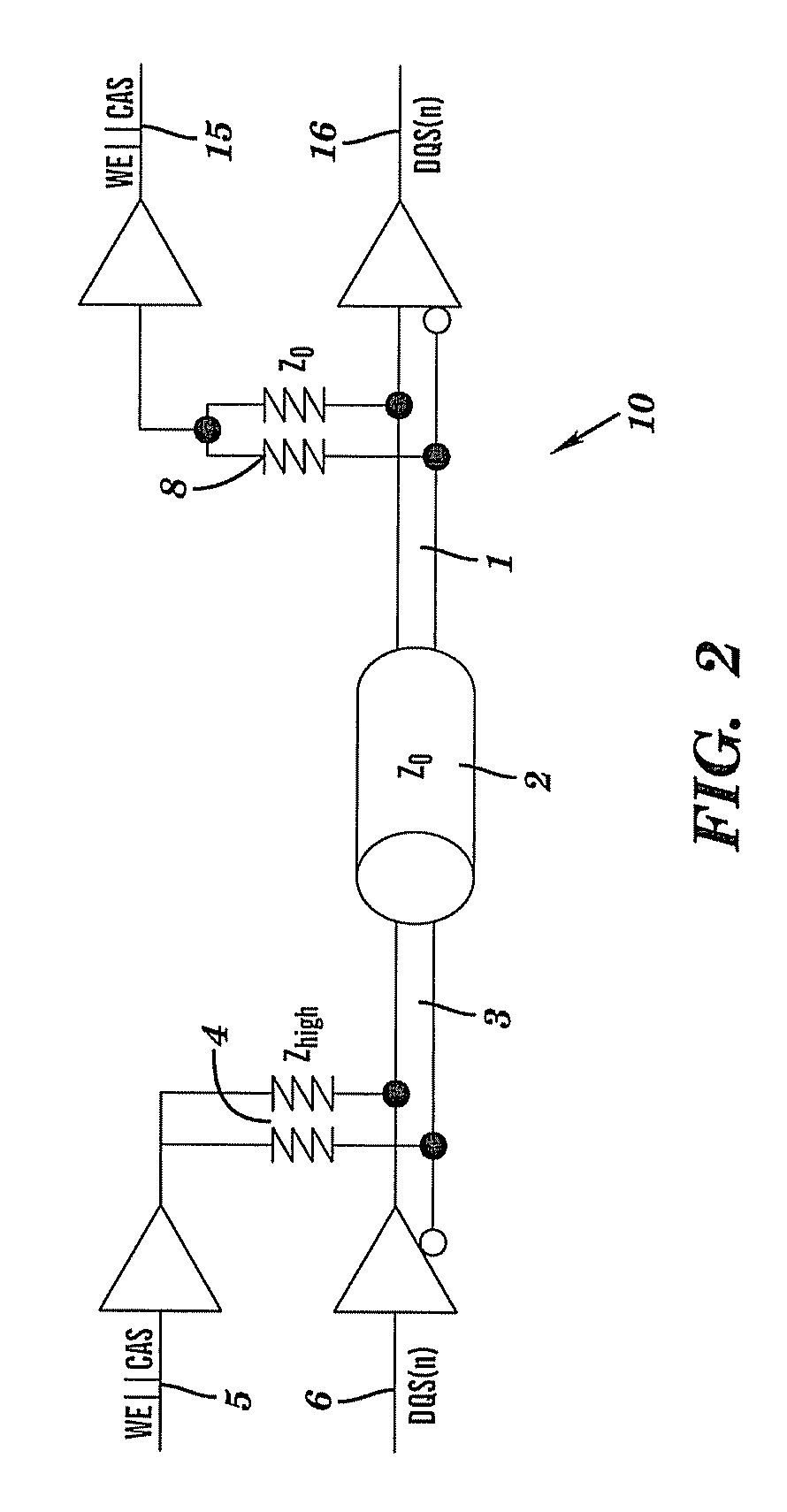Using common mode differential data signals of DDR2 SDRAM for control signal transmission
a technology of ddr2 and differential data, applied in the direction of information storage, static storage, digital storage, etc., can solve the problem of greatly increasing latency
- Summary
- Abstract
- Description
- Claims
- Application Information
AI Technical Summary
Benefits of technology
Problems solved by technology
Method used
Image
Examples
Embodiment Construction
[0019]The teachings herein provide for a high-speed differential signaling scheme for double-data-rate two synchronous dynamic random access memory (DDR2 SDRAM, or DDR2). The signaling scheme varies a common-mode voltage, thus causing the common-mode voltage to transmit a logical signal. The operating voltage for the memory circuit disclosed herein ranges from about 0 volts to about 1.8 volts.
[0020]In the typical embodiment, slower DDR2 control signals (RAS / CAS etc.) are not structured using separate input paths and output paths (I / O's), but are transmitted via the common-mode of the higher speed differential signals. Using this design, the number of package pins and package / board wiring lanes required to implement DDR2 memory are reduced when compared to prior art designs for DDR2.
[0021]The teachings herein provide a high speed differential receiver having a common-mode that can be varied at a desired lower speed without effecting signal integrity of a received high speed signal. A...
PUM
 Login to View More
Login to View More Abstract
Description
Claims
Application Information
 Login to View More
Login to View More - R&D
- Intellectual Property
- Life Sciences
- Materials
- Tech Scout
- Unparalleled Data Quality
- Higher Quality Content
- 60% Fewer Hallucinations
Browse by: Latest US Patents, China's latest patents, Technical Efficacy Thesaurus, Application Domain, Technology Topic, Popular Technical Reports.
© 2025 PatSnap. All rights reserved.Legal|Privacy policy|Modern Slavery Act Transparency Statement|Sitemap|About US| Contact US: help@patsnap.com



